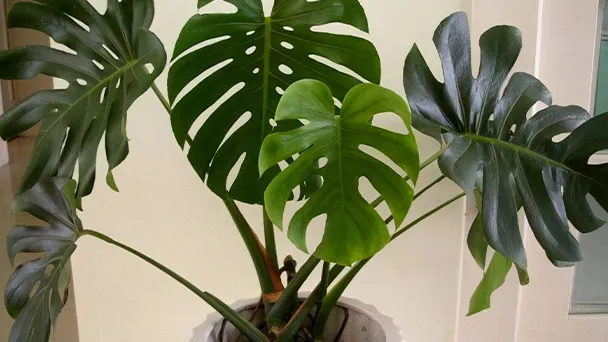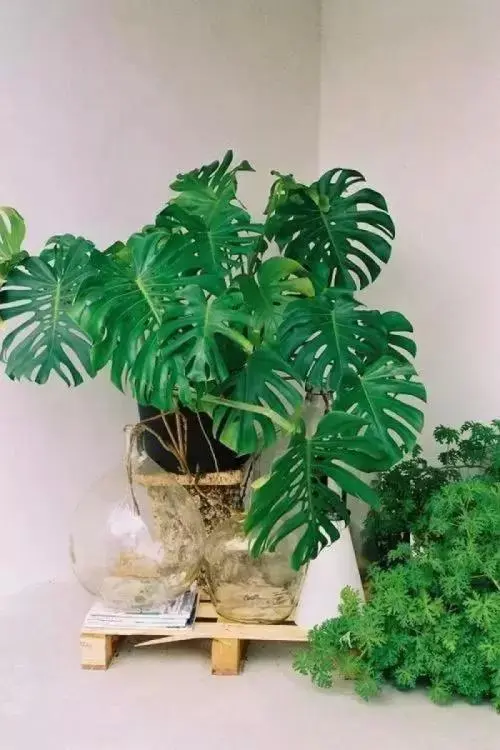Why Are My Rhaphidophora Tetrasperma Have Yellow Leaves?
Written by Ivy
Dec 28 2021

The yellow leaves of indoor potted Rhaphidophora Tetrasperma can be caused by improper watering, dry air, inappropriate light, temperature change, failure to recover after repotting, infection with diseases and pests, improper fertilization or natural aging of Rhaphidophora Tetrasperma leaves.
Read More:
How To Save My Rhaphidophora Tetrasperma Root Rot?
Read More:
How To Water Rhaphidophora Tetrasperma?
Read More:
How Much Light Does Rhaphidophora Tetrasperma Need
Humidity Level
High humidity will cause rotten roots of rhaphidophora Tetrasperma, and low humidity will cause water shortage and poor growth of plants. Both of these conditions will cause yellow leaves of Rhaphidophora Tetrasperma.Read More:
How To Save My Rhaphidophora Tetrasperma Root Rot?
- How To Solve
Read More:
How To Water Rhaphidophora Tetrasperma?
Soil Discomfort
Rhaphidophora tetrasperma has developed fleshy roots and requires high soil permeability. Cohesive or slightly cohesive soil is unfavorable to its growth. If the soil is not changed for a long time or the soil itself has poor air permeability, it will cause soil hardening, affect the respiration of rhaphidophora tetrasperma root, make Rhaphidophora Tetrasperma grow poorly, and lead to yellow leaves.- How To Solve
Improper Light
Rhaphidophora Tetrasperma is shade tolerant, but long-term placement of Rhaphidophora Tetrasperma in a shaded environment will affect photosynthesis and turn yellow leaves; At the same time, Rhaphidophora Tetrasperma cannot be placed under strong light, which will cause the leaves of Rhaphidophora Tetrasperma to burn and turn yellow.Read More:
How Much Light Does Rhaphidophora Tetrasperma Need

Low Temperature
The suitable temperature for the growth of Rhaphidophora Tetrasperma is 20 ~ 25 ℃, and the temperature at night in winter shall not be lower than 10 ℃. The mature plants can withstand the low temperature of 5 ℃ in a short time, and below 5 ℃ is prone to freezing injury, causing the yellow leaves of Rhaphidophora Tetrasperma.- How To Solve
Too Little Fertilization
Iron is a necessary raw material for plants to synthesize chlorophyll. If there is no fertilization for a long time, or the iron element in soil or fertilizer is insufficient, it will affect Rhaphidophora Tetrasperma to synthesize chlorophyll, resulting in Leaf Chlorosis and yellowing.- How To Solve
Poor Ventilation
Rhaphidophora Tetrasperma likes humid environment, but if the ventilation is not smooth and the environment is muggy, the plant grows in turbid air for a long time and has difficulty breathing, resulting in stuffy yellow leaves of Rhaphidophora Tetrasperma.- How To Solve
Latest Updated
- Benefits of Bugleweed - 7 Science-backed Health Benefits
- Bugleweed Dangers & Side Effects - Is It Poisonous?
- How to Plant Evergreen Trees - What You Should Know
- When to Plant Evergreens - Grow Guide for Evergreen Trees
- 12 Wonderful Evergreen Shrubs for Your Garden
- 12 Popular Evergreen Plants with Pictures for Beginners
- When And How To Prune A Lilac Bush Like a Pro
- How to Grow & Care for Lilac Vine (Hardenbergia Violacea)
- Japanese Lilac Tree (Syringa Reticulata) Care & Propagation Guide
- Shumard Oak Pros and Cons - What to Know
Popular Articles
- Winter maintenance of Antirrhinum Majus
- How to Grow Terminalia Mantaly Tree
- How to Grow and Care for Crossostephium Chinense
- How to grow Antirrhinum Majus in spring
- Peristeria Elata (Dove Orchid) Profile: Info & Care Guide
- Underwatered Snake Plant (Sansevieria Trifasciata) - Signs And How To Fix
- How to Care for Brazilian Jasmine Plant (Mandevilla Sanderi)
- How to Grow & Care for Graptopetalum Purple Delight in Summer
- Rosa Chinensis (China Rose): Plant Growing & Care Tips
- How to Care for Baby Sun Rose (Aptenia Cordifolia)